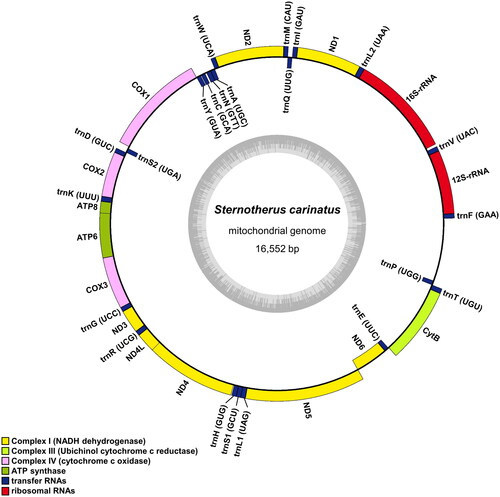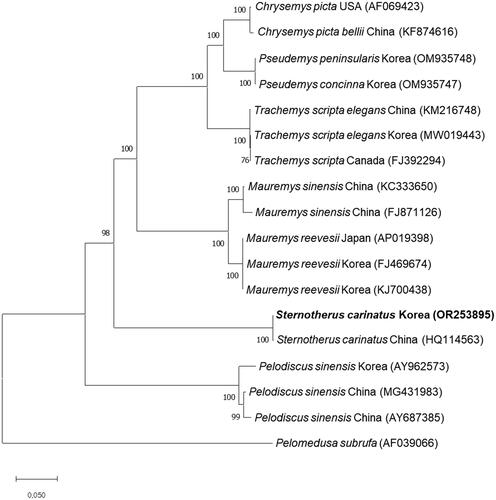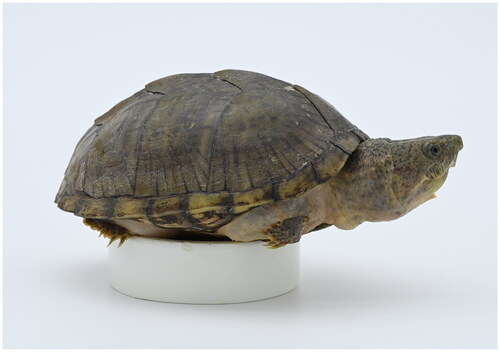Figures & data
Figure 2. Mitochondrial genome map of Sternotherus carinatus. Genes encoded on the heavy strand are written outside the circle and genes on the light strand inside the circle. The dark and light parts in the grey circle represent GC and at contents, respectively.

Figure 3. Phylogenetic tree of S. carinatus and other related species based on mitochondrial genome sequences. Phylogenetic analysis was performed using MEGA X software. The names of country referred behind each species indicate the locations where the sample was collected, as referenced on GenBank. GenBank accession numbers of each mt genome sequence are given in the bracket after the species name, and the following sequences were used: AF069423 (Mindell et al. Citation1999), KF874616 (Jiang et al. Citation2016), OM935748 (Chung et al. Citation2022), OM935747 (Park et al. Citation2022), KM216748 (Yu et al. Citation2016), MW019443 (Park et al. Citation2021), FJ392294 (Russell and Beckenbach Citation2008), KC333650 (Fang et al. Citation2013), FJ871126 (reference unavailable), AP019398 (Asami et al. Citation2019), FJ469674 (Shin et al. Citation2015), KJ700438 (reference unavailable), HQ114563 (Li et al. Citation2017), AY962573 (Jung et al. Citation2006), MG431983 (Zhang et al. Citation2019), AY687385 (reference unavailable), and AF039066 (Zardoya and Meyer Citation1998). the bootstrap value based on 1000 replicates is represented on each node. Pelomedusa subrufa was used as an outgroup to root the tree.

Supplemental Material
Download MS Word (522.1 KB)Supplemental Material
Download MS Excel (36.5 KB)Data availability statement
GenBank accession number from the complete mitochondrial genome of Sternotherus carinatus (OR253895) has been registered with the NCBI database (https://www.ncbi.nlm.nih.gov/OR253895). The associated BioProject, BioSample, and SRA accession numbers are PRJNA993827, SAMN36409325, and SRR25243167, respectively.

